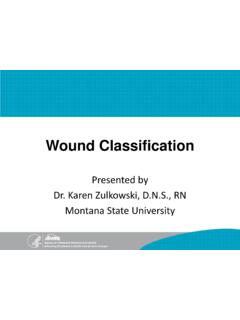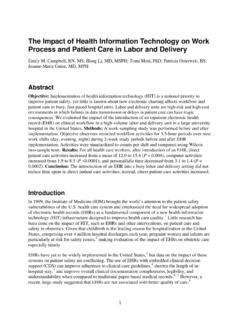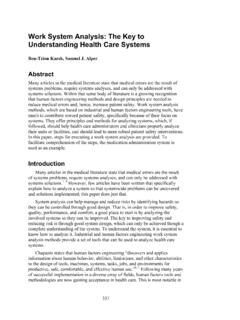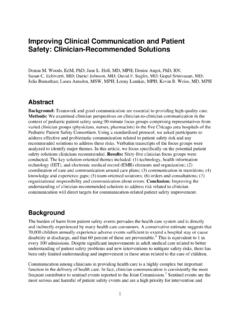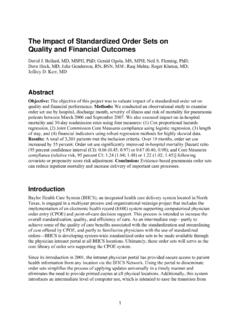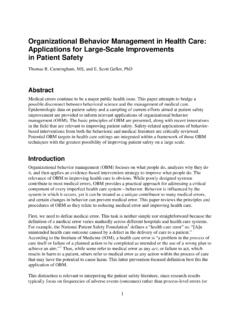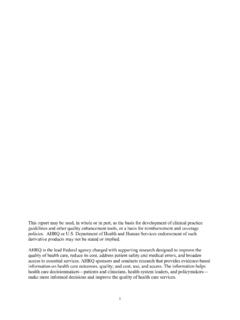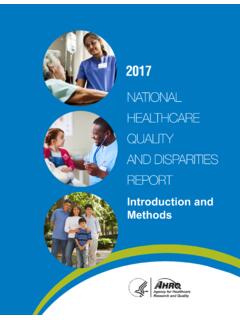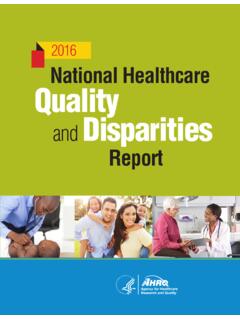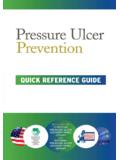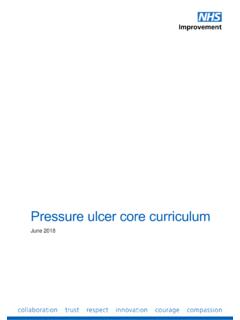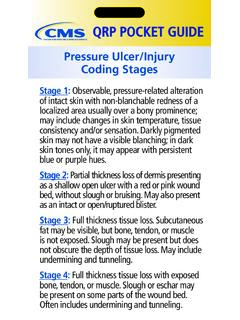Transcription of Using Pressure Ulcer Risk Assessment Tools in Care Planning
1 Using Pressure Ulcer Risk Assessment Tools in care PlanningPresented by Elizabeth A. , RN, ACNS-BC, CWON, ETN, MAPWCA, FAANE xcelsior College School of NursingWelcome!Thank you for joining this webinar about howto use Pressure Ulcer risk Assessment Tools in care Little About Board certified wound and ostomy nurse Clinical editor of the journal Advances in Skin and Wound care Vice president of the World Council of Enterostomal Therapists (WCET) Faculty member of Excelsior College School of Nursing Author of numerous articles and two books on wound care Past president of the National Pressure Ulcer Advisory Panel Former consultant to CMS on some skin conditions3 Today We Will Talk About Pressure Ulcer risk factor Assessment Pressure Ulcer risk Assessment Tools Using Pressure Ulcer risk Assessment Tools in care planningThese topics were introduced in your 1-day training.
2 Today, we will revisit them in depth. Please make a note of your questions. Your Quality Improvement (QI) Specialists will follow up with you after this webinar to address of Risk Factor Assessment Multifaceted Ongoing StandardizedStandardized risk Assessment is a prerequisite to implementing an evidence-based Pressure Ulcer prevention K. Zulkowski5 Purpose of Risk Factor Assessment Risk factor Assessment facilitates Clinical decisionmaking Selective targeting of preventive interventions care Planning Communication between health care workers and care settings6 Purpose of Risk Factor AssessmentRisk factor Assessment identifies Patients who are more likely to develop Pressure ulcers Different components of risk for Pressure ulcers7 When To Do Risk Assessment On admission Within 8 hours Reassessment frequency Based on patient s acuity Significant change in patient s condition89 Risk Assessment ToolsAdult Tools used in the
3 United States include Norton Scale Begins onPage 136 Braden ScaleBegins onPage 134 Today, we will focus on the Braden Scale Risk Scale11 Begins onPage 134 How To Score Risk Factors Score risk factors from 1 to 4 except Score friction/shearfrom 1 to 3. Risk factor score of 1 is the lowestlevel of functioning. If a category falls between two numbers, choose the To Interpret Braden Score Total score ranges from 6 to 23. Lower Braden score indicates higher level of risk for Pressure Ulcer development. In most cases, a score of 18 or less indicates at-risk status. Tailor this number to fit your hospital or unit.
4 Low subscale scoreindicates risk from that factor. Address all deficits in care not rely on the total score the Braden Scale14 Limits of Risk Scores Some Assessment Tools include a scoring system to predict Pressure Ulcer risk: No tool has perfectpredictability. Even patients with a low risk score may need intervention. If you base a patient s individualized care plan on the risk score alone, the care plan will not be tailored to all of his or her risk factors. Instead, use a comprehensive approach to risk Assessment to identify Pressure Ulcer risk t rely on scores Pressure Ulcer Risk Assessment History.
5 Assess co-morbidities, medications. Look at the skin. Touch the skin. Ayello, 20121617 History: It s Not Just About Score Ayello, 2006 Assess Co-Morbidities & Medications Perfusion and oxygenation Nutritional deficits Higher rates of PU Corticosteroid use CHF COPD PVD DM Obesity18 Look at Skin Skin StatusBony prominences, especially sacrum and heelsSkin to skinUnder medical devicesPhotos 2014, Ayello19 Touch SkinSkin temperature may predict Pressure Ulcer Assessment Critically ill patients Number of hypotensive episodes, hemodynamic instability Medical devices Perioperative patients Length of surgery Number of hypotensive episodes during surgery Low core temperatures during surgery Amount of time immobilized before and after surgery21 Ayello, 201422 Clinical Decision making Based on Pressure Ulcer Risk Skin assessmentBraden Scale scoresCo-morbiditiesIs my patient at risk for a Pressure Ulcer ?
6 What is the plan of care ? Using Assessment ToolsAssessment Tools should be used By trained staff In conjunction with clinical judgment and review of other risk factors To identify a patient s risk factors To plan care that addresses these factors Prevention strategies should be consistent with the patient s preferences and care your hospital has an electronic health record system, integrate Assessment Tools into the system. 23 Strategies for Using Risk Assessment Tools Use valid and reliable Tools . Train staff in how to properly use risk Assessment Tools . Assess all patients. Tailor interventions based on patient-specific areas of who previously had Pressure ulcers are at risk for getting them again, especially under similar circumstances.
7 Plan Risk Assessment Tools in care PlanningTake these areas of risk identified by the Braden Scale for a specific patient and other risk factors included as part of a structured comprehensive risk Assessment . interventions to address each area of risk that are consistent with patient preference and care goals. a tailored Pressure Ulcer prevention plan to all staff who interact with the patient. Also share it with the patient and their family members. 25 Planning care for Each Category26 Begins onPage 138 Select Interventions Bariatric patients Appropriate size and weight of equipment, including Pressure redistribution support surfaces.
8 Are staff trained to care for these patients? Critically ill patients Choose Pressure redistribution support surfaces based on individual s perfusion and ability to be turned. Slow, gradual turns ; allow time for hemodynamic and oxygenation stabilization. Perioperative patients Facial pads for prone position. Operating room support surfaces on table. Heel suspension devices. 27 Ayello, 2014 Case StudyYour hospitalized patient Responds to verbal commands Reports no pain Can turn and reposition without assistance but needs frequent reminders Needs encouragement to walk more than twice a day outside his/her room Eats some of the food on his/her tray Has not suffered any recent weight loss Has moist skin from urinary and fecal incontinenceWhat is the total Braden Scale score for this patient, and is he/she at risk for a Pressure Ulcer ?
9 28 Case Study Braden Scale Scores4423331929 Selected care Planning ExamplesPlan care for pain. Assess Using validated and reliable pain Assessment scales; use specific Tools or observe body language or other cues for nonverbal patients. Prevent and manage pain. Do this when lifting or transferring patient. Coordinate pain medication administration with onPage 138 Selected care Planning Examples Plan care for moisture problems. Use pH balanced skin cleaning products. Don t massage or vigorously rub skin at risk for Pressure ulcers. Cope with dry skin. Apply moisturizing products such as lotions and creams.
10 Cope with wet skin (incontinence, perspiration). Clean skin promptly. Protect skin with products such as skin sealants, lotions, and care Planning ExamplesPlan care for activity problems. Inability to move while sitting in a wheelchair Use support cushion in properly fitted wheelchair. Consider PT/OT referrals for evaluation. 32 Selected care Planning ExamplesPlan care for mobility problems. Heels on the mattress Use heel suspension care Planning ExamplesPlan care for nutrition problems. Encourage family to bring favorite foods. Offer nutrition supplements and care Planning ExamplesPlan care for friction and shear.
